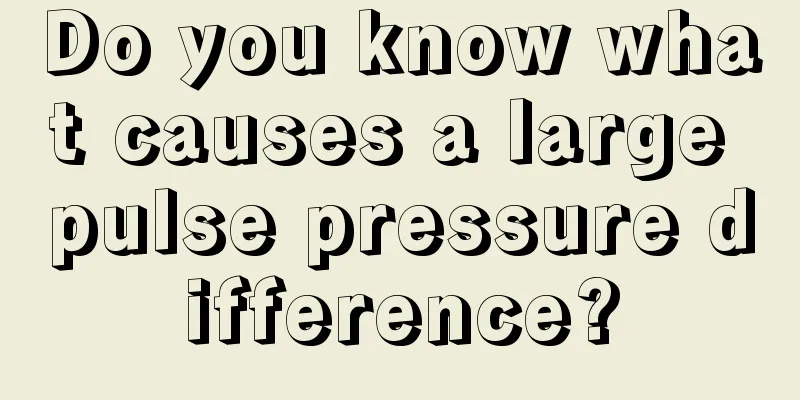Do you know what causes a large pulse pressure difference?

|
When it comes to pulse pressure difference, many people may not know it. It is actually the difference between diastolic pressure and systolic pressure. The pulse pressure difference of a normal person should be 40 mm. Patients with hypertension will generally have a higher value, and patients with low blood pressure will have a lower value than the normal value. If the pulse pressure difference is large, people must understand the cause and treat it. Increased pulse pressure difference is an independent risk factor for cardiovascular and cerebrovascular diseases, and is more common in elderly hypertension with isolated increased systolic blood pressure. Studies have found that for every 10 mmHg increase in pulse pressure, the thickness of the carotid intima-media layer will increase by 0.01 mm, and the risk of carotid artery plaque formation will also increase with the increase in pulse pressure. For example, if the pulse pressure difference is 85 mmHg, the risk of myocardial infarction and stroke will increase by more than 10% compared with that of 65 mmHg. Tip: The greater the pulse pressure difference, the greater the harm to the cardiovascular and cerebrovascular systems. Active intervention is needed and should not be taken lightly. Once an abnormal pulse pressure is found, you should go to the hospital in time to find out the cause and treat the primary disease. The main reasons for excessive pulse pressure difference are: (1) Suffering from hypertension and arteriosclerosis, which causes the elasticity of the arterial wall to weaken, the systolic blood pressure to increase, and the diastolic blood pressure to decrease; (2) Long-term hypertension causes myocardial overload, resulting in heart enlargement or aortic valve insufficiency; (3) Suffering from hyperthyroidism or severe anemia. Usually, when measuring blood pressure, people tend to only pay attention to the level of blood pressure and rarely care about the size of the pulse pressure difference. Little do they know that the size of the pulse pressure difference has important clinical significance. For this special type of hypertensive patients with increased pulse pressure difference, antihypertensive treatment should take into account both moderate reduction of systolic blood pressure and maintenance of a certain mean arterial pressure and diastolic blood pressure. The blood pressure reduction value cannot be generalized or applied in a one-size-fits-all manner. Of course, if there is no concurrent heart, brain, kidney or diabetes disease, it is best to lower blood pressure to 120-140/70-86 mmHg. |
<<: What are the vegetables rich in vitamin D
>>: How to treat heat urticaria?
Recommend
Early symptoms of submandibular lymphoma
Submandibular lymphoma is a malignant tumor with ...
The effect of mustard, there is such a edible technique
Mustard is a common ingredient that can be used t...
There is white coating on the tongue
Generally speaking, it is very normal for everyon...
Can café au lait spots be cured completely?
Café au lait spots generally appear as large spot...
How to treat high hcy value
Many people will encounter Hcy during physical ex...
Are abdominal muscle trainers useful?
Nowadays, men all hope to have beautiful abdomina...
Which hospital is trustworthy for rectal cancer
Rectal cancer is one of the most common malignant...
Introduction to Pumpkin Vine's smoking cessation method
We all know that smoking is harmful to health, bu...
What are the symptoms of thyroid cancer? What harm will thyroid cancer cause?
Cancer is a very scary disease. There are many ty...
How to prevent and treat kidney stones
Kidney stones are a disease with a relatively hig...
How much does one chemotherapy for bone cancer cost
How much does a bone cancer chemotherapy cost? Th...
How to remove tea stains from cups?
In life, many people like to drink tea, but peopl...
What are the ways to match clothes in summer
The weather is quite hot in the summer, which oft...
What to do if you can't eat in the late stage of esophageal cancer
When patients with advanced esophageal cancer are...
Reasons why hands and feet get numb easily
Generally, when we maintain a posture for a long ...









